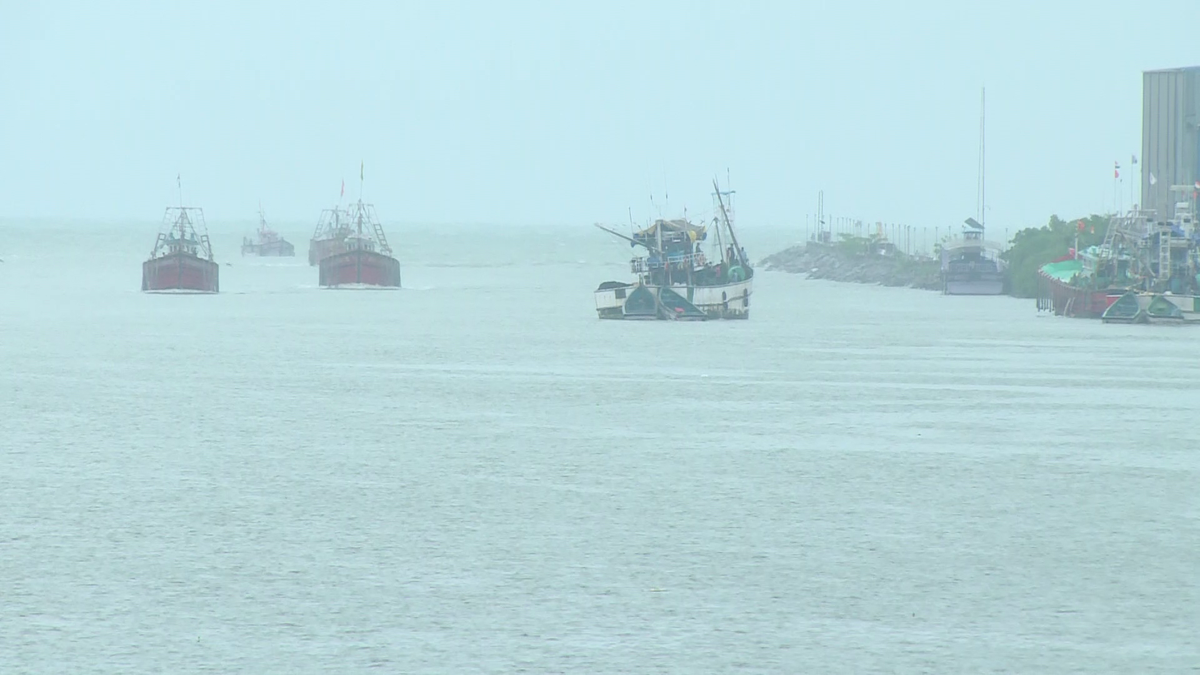 |
|
The coastal districts of Dakshina Kannada and Udupi in Karnataka are experiencing a period of intense rainfall, leading to concerns about potential flooding and damage to infrastructure. The India Meteorological Department (IMD) has issued a warning of heavy to very heavy rains in these regions for the next four days, advising residents to take necessary precautions. The situation is further complicated by gusty winds, adding to the potential for disruption and damage. The current weather pattern is attributed to an upper air cyclonic circulation located over the Eastcentral Arabian Sea, off the coasts of North Karnataka and Goa. This cyclonic circulation has led to the formation of a low-pressure area in the region, which is expected to intensify further into a depression over the subsequent 36 hours. The widespread rainfall observed across 17 districts of Karnataka, including Udupi, Uttara Kannada, and Dakshina Kannada, highlights the extent of the influence of this weather system. The impact of the heavy rainfall is already evident in the reported damage to houses in Udupi and Dakshina Kannada districts. The Handadi Gram Panchayat in Brahmavara taluk of Udupi district has recorded the highest rainfall in the state, indicating the severity of the conditions in that particular area. The detailed rainfall figures provided for various taluks within Dakshina Kannada and Udupi districts offer a granular view of the distribution and intensity of the rainfall. These figures are crucial for local authorities to assess the situation and deploy resources effectively to mitigate the impact of the heavy rains. The forecast of extremely heavy rain in Uttara Kannada district until Thursday morning adds another layer of concern, requiring heightened vigilance and preparedness in that region as well. The convergence of factors, including the cyclonic circulation, low-pressure area, and the subsequent intensification into a depression, underscores the complexity of the meteorological situation and the challenges in accurately predicting the future course of the weather system. The IMD's role in providing timely and accurate forecasts is critical for enabling effective disaster management and minimizing the potential for loss of life and property. The residents of the affected districts are advised to stay informed about the latest weather updates and heed the warnings issued by the authorities. It is important to avoid unnecessary travel during periods of heavy rainfall and to take precautions to protect themselves and their property from the potential impact of flooding and strong winds. The situation highlights the vulnerability of coastal regions to extreme weather events and the need for comprehensive disaster preparedness strategies to mitigate the risks associated with climate change.
The intensity and duration of the rainfall raise concerns about the potential for widespread flooding, landslides, and damage to infrastructure. The agricultural sector, which is a significant contributor to the economy of these districts, is particularly vulnerable to the impacts of heavy rains. Crop damage and disruption to agricultural activities can have significant economic consequences for the region. The vulnerability of houses, particularly those in low-lying areas or those constructed with less durable materials, is evident in the reports of damaged houses in Udupi and Dakshina Kannada districts. The impact on essential services, such as transportation and communication, also needs to be considered. Disruption to road and rail networks can hinder the delivery of essential goods and services and impede rescue and relief efforts. The effectiveness of the disaster response efforts will depend on the coordination between various government agencies, local authorities, and community organizations. It is crucial to have well-defined protocols and procedures for responding to emergencies, including evacuation plans, shelter arrangements, and the provision of food, water, and medical assistance to those affected by the floods. The role of community participation in disaster preparedness and response cannot be overemphasized. Raising awareness among the public about the risks associated with heavy rainfall and providing training on how to respond to emergencies can significantly enhance the resilience of communities to these events. The long-term implications of climate change on the frequency and intensity of extreme weather events also need to be considered. Investing in infrastructure that is more resilient to climate change and implementing policies to reduce greenhouse gas emissions are essential steps in mitigating the risks associated with a changing climate.
Looking ahead, continuous monitoring of the weather situation and timely dissemination of information to the public are crucial. The IMD's forecasts and warnings should be effectively communicated to all stakeholders, including government agencies, local authorities, and the general public. The media also plays a vital role in disseminating information and raising awareness about the risks associated with heavy rainfall. The experience gained from dealing with the current situation can be used to improve disaster preparedness and response strategies in the future. Identifying areas that are particularly vulnerable to flooding and landslides and implementing appropriate mitigation measures can help to reduce the impact of future extreme weather events. The need for better drainage systems, improved infrastructure, and more resilient housing is also highlighted by the current situation. Investing in these areas can significantly reduce the vulnerability of communities to the impacts of heavy rainfall. The long-term sustainability of coastal communities depends on their ability to adapt to the challenges posed by climate change. This requires a concerted effort from governments, businesses, and individuals to reduce greenhouse gas emissions and build a more resilient future. The situation in Dakshina Kannada and Udupi districts serves as a reminder of the importance of disaster preparedness and the need for effective action to mitigate the risks associated with extreme weather events.
Source: Heavy to very heavy rain forecast for DK, Udupi districts for next four days
